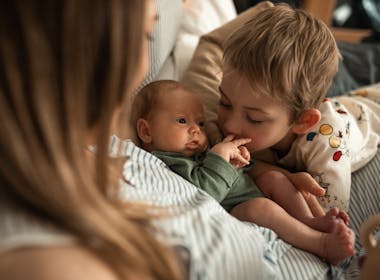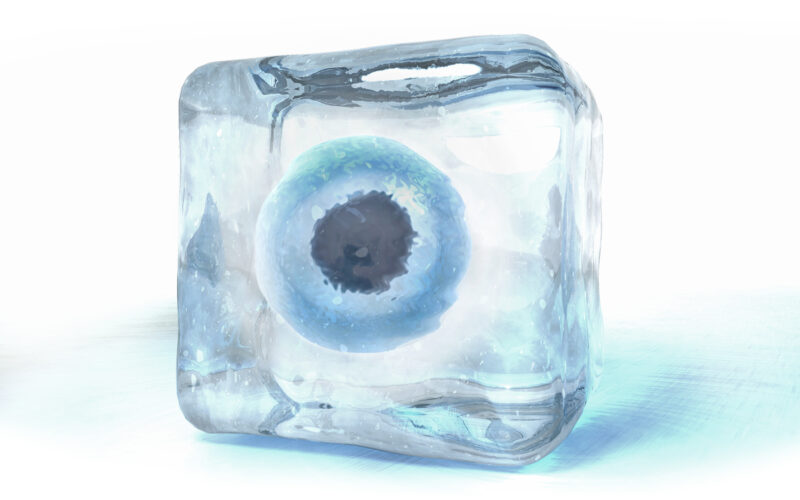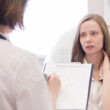Reproductive technology has grown by leaps and bounds in recent years. Suddenly, women seem to have more options than ever before as to when, where, and how to have children.
To see the fertility-clinic ads on the public-transit commute from my New Jersey home to New York City, you’d think the ticking of a woman’s biological clock is a thing of the past. These days, women are being told they can have a baby whenever they want, partner or not.
For one thing, egg freezing, aka “oocyte cryopreservation,” which was created for patients undergoing chemotherapy, is now being used electively in the mainstream population to the point that certain companies will pay for it, as part of their employees’ benefits plans. But what the train-station-marketing strategy doesn’t make clear is that freezing a woman’s eggs is no guarantee that she will give birth to a biological child down the line. There are many steps along the way, and each comes with its own contingencies.
First, those eggs need to be retrieved from her ovaries, then they must be frozen. Then they must be maintained in their frozen state consistently for a period of time. Later, the eggs must be thawed, inseminated, and implanted. As with any medical procedure—or procedures, as the case may be—there are risks, many of which even women who have undergone egg freezing have later found surprising and regrettable. Here are some things women considering egg freezing should consider.
1. The chances of a live birth are low.
The chance of having a live birth following frozen embryo transfer depends on many factors, such as the woman’s age when the eggs were harvested and her age when the embryo(s) are implanted—the younger the better. The Department of Obstetrics and Gynecology of the University of California, Los Angeles reports that the estimated likelihood of a successful pregnancy from one transferred (previously frozen) egg is 4-12%. Typically, more than one egg is transferred at a time, especially if the woman is over age 40. This 2022 study found that 38.4% of frozen transfer cycles (remember, multiple eggs would be transferred in one transfer cycle) led to a live birth in women aged 30-34. In contrast, just 25% of transfer cycles led to a live birth in women over age 40.
These numbers, however, don’t have a whole lot of research to support them, as a large majority of women who freeze their eggs—85% in fact—do not return to thaw them.
2. The risks of late pregnancy remain.
Most women who freeze their eggs are in their mid-thirties and presumably plan to come back for them in the future, maybe closer to age 40. The American College of Obstetricians and Gynecologists recognizes a number of increased risks in having a baby after age 35, which is known as “advanced maternal age.” These include an increased risk of preterm labor, preterm birth, stillbirth, and any risks associated with a preexisting condition, such as high blood pressure.
So, while egg freezing may attempt to promise a woman viable eggs for future pregnancy, it does not remove the risks of pursuing pregnancy later in her life. In other words, for some, the ticking biological clock is stubborn.
3. The retrieval procedure is not a guarantee.
There is also an emotional risk involved in egg freezing. The process involves screening, hormone treatments to stimulate ovulation, multiple office visits, and vaginal ultrasounds, culminating in the retrieval procedure, for which a woman is sedated. To get to this point, a woman has invested significant time, energy, and money. As a result, if things don’t go as planned, there are likely to be feelings of disappointment and crushed false hope—feelings left in her court to manage.
4. The long-term risks aren’t clear yet.
Currently, there are no documented risks to children born from a frozen egg versus those born from “fresh” (that is, immediately inseminated) eggs. However, fertility clinics’ websites often note that not enough time has elapsed since the procedure began (the first child from a frozen egg was born in 1986) to measure possible long-term effects of egg freezing.
Apart from the risks, a woman considering freezing her eggs should also be aware that each cycle of freezing typically costs $10,000, and she must pay storage fees each year thereafter.
So to women considering egg-freezing, let it be known that despite what the posters will lead you to believe, there is another way.
Of course, there isn’t a magic formula for meeting a partner ready to begin a family on your timeline. There is, however, a range of inexpensive, effective, and side-effect-free means of understanding your fertility and how to improve it now, so you’re likely more ready to conceive in the future.
Fertility-Awareness-Based Methods (FABMs) observe physical biomarkers like cervical mucus, basal body temperature, and hormones in urine to determine when the various phases of a woman’s cycle occur and for how long. Charting these details of the cycle, and not simply the start of the period, can help women to identify conditions such as thyroid disease, polycystic ovarian syndrome (PCOS), or low progesterone (which can lead to miscarriage). Doctors who specialize in NaProTECHNOLOGY can assist women to make these diagnoses and resolve issues impeding her healthy fertility.
With guidance from a trained Fertility Awareness-Based Methods instructor, these conditions can be managed and often improved with changes to diet, exercise, and vitamin supplements. Irregular cycles may become more regular, making it easier to anticipate ovulation and to conceive. Because all the systems in the body are connected, this can also mean better overall health—which means you can expect more years enjoying watching your longed-for children grow up.
In making any medical decision, including egg-freezing, it’s worth getting all the facts before making a decision, and that includes all the facts about your current reproductive system. After all, it is the same reproductive system you’ll be relying on whenever the time comes to have children, whether sooner or later.
This article was updated on October 4th, 2023, to include updated statistics and remove broken links.







